Your cart is currently empty!
Kids in Folk Art & Year of the Ox
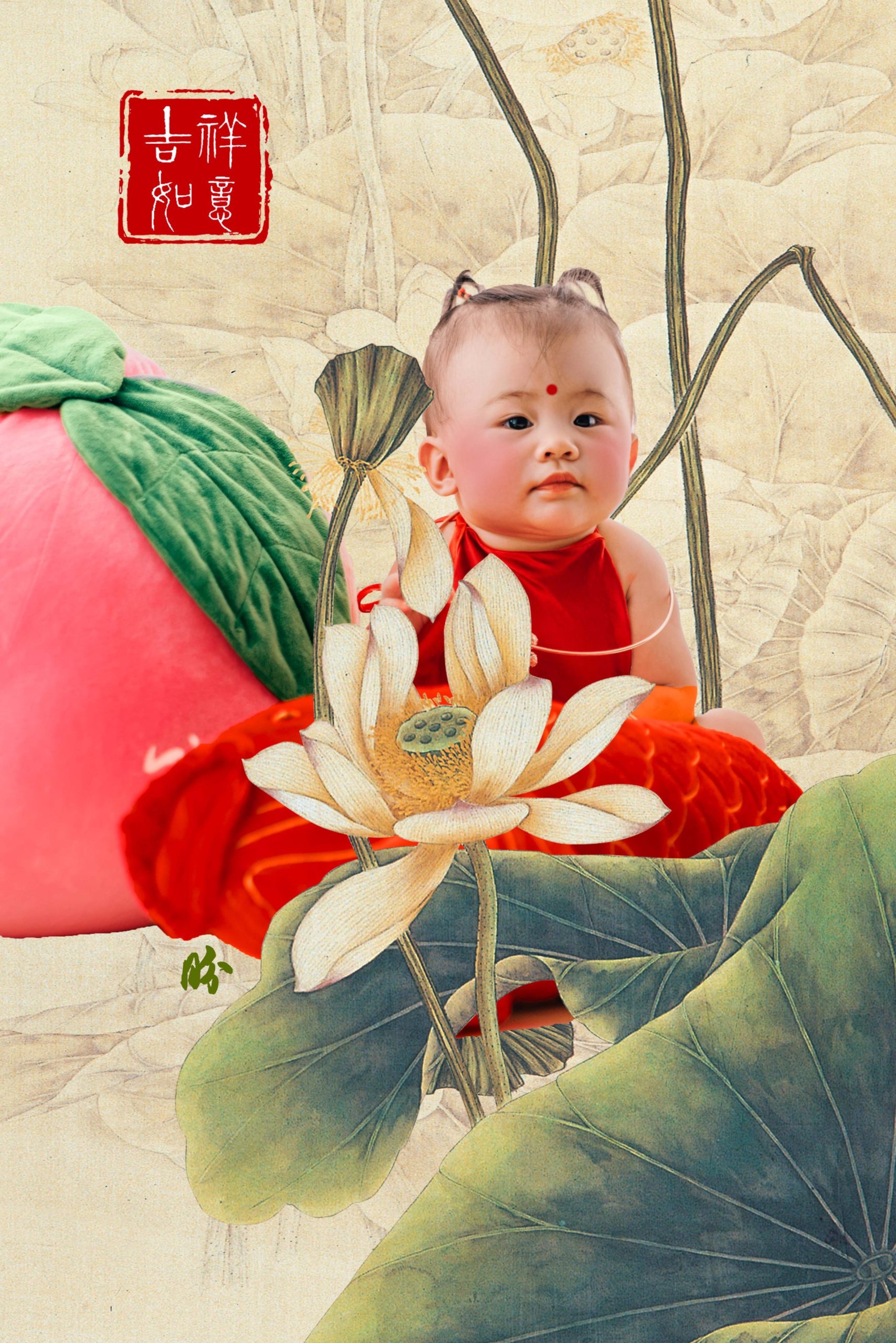
Many years ago I curated an exhibition in Melbourne’s Brunswick Street Gallery, exploring the boundaries between Folk Art as Fine Art pieces in the setting of a gallery. This remains one of my favourite topics–the breaking of artificial (and pretentious) barrier between what is considered folk (therefore kitschy and low-class) vs fine art. So we have come of the time of the year when folk art and traditions rule our celebrations, and you can never be too kitsch for it–THE CHINESE NEW YEAR! And since today’s the 7th day of the Chinese New Year, also known as the day of the Human/People (we were believed to be created by the mythical goddess on the 7th day), there’s nothing more suitable than to talk about birth and tiny human in this edition!
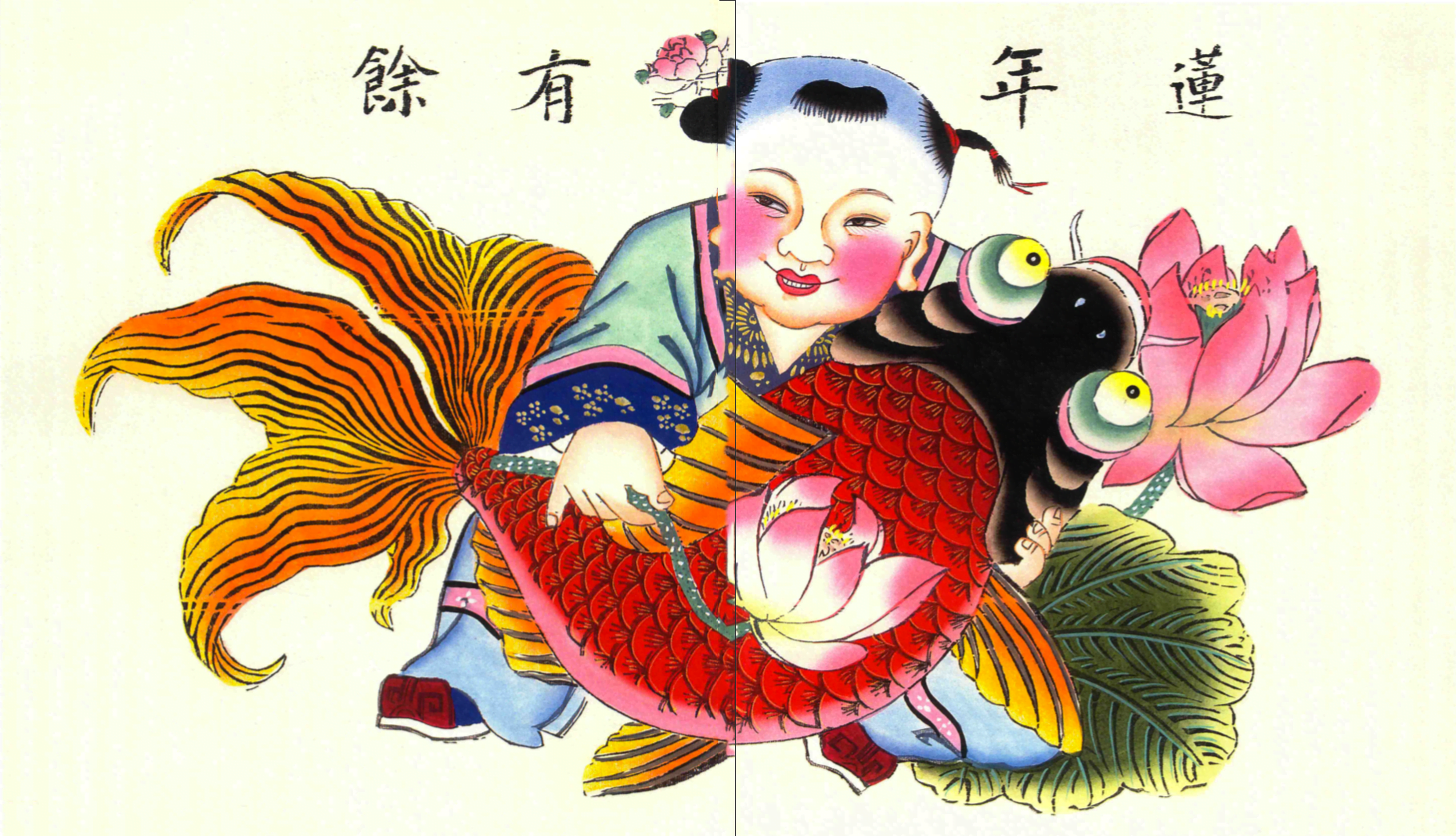
There is no end to the cliches and stereotypes related to this Chinese festival, but the best part about it is, I’m learning and starting to enjoy these cliches and stereotypes simply because they do reflect the very folk and down-to-earth part about my culture. As a traditionally agrarian society for thousands of years, the farmers were only second to the officials and literati (technically), and their art and customs should be equally celebrated as that of the literati even if they seemed really simplistic and unrefined to our modern consumeristic eyes.

Being an agrarian society means that the folks were deeply atuned to the changing seasons, and the crossing of one entire year to another meant the greatest of all seasonal celebrations. The Nian Hua (CNY folk woodblock prints) were visual representation and expressions of these simple folks’ well wishes for the family, friends, and nation in the coming year, and they were carved onto woodblocks for mass printing so that everyone could have a piece of the well wishes in their household. China is the inventor of woodblock (and later on movable) printing and paper (yes, Gutenberg didn’t invent the printing press), so the practice of printed posters for new year was widespread from as early as the Song dynasty (11th century).

The prints which started out as prints of deities for protection and blessings became increasingly popular in the Ming dynasty that followed, and took on a lot of different subject matters that are much more relatable to the everyday folks by the mid Qing dynasty.
I think for many of us, when we think about the woodblock prints would think of the image of a child with a carp (at least that’s the case for me anyway). So I took the opportunity to dress my tiny new model for a shoot, exploring the different aspects of children’s attire and the symbolism of auspiciousness in the process! It isn’t Chinese New Year Woodblock Print for the folks if it isn’t filled with contrasting colours and auspicious imageries!
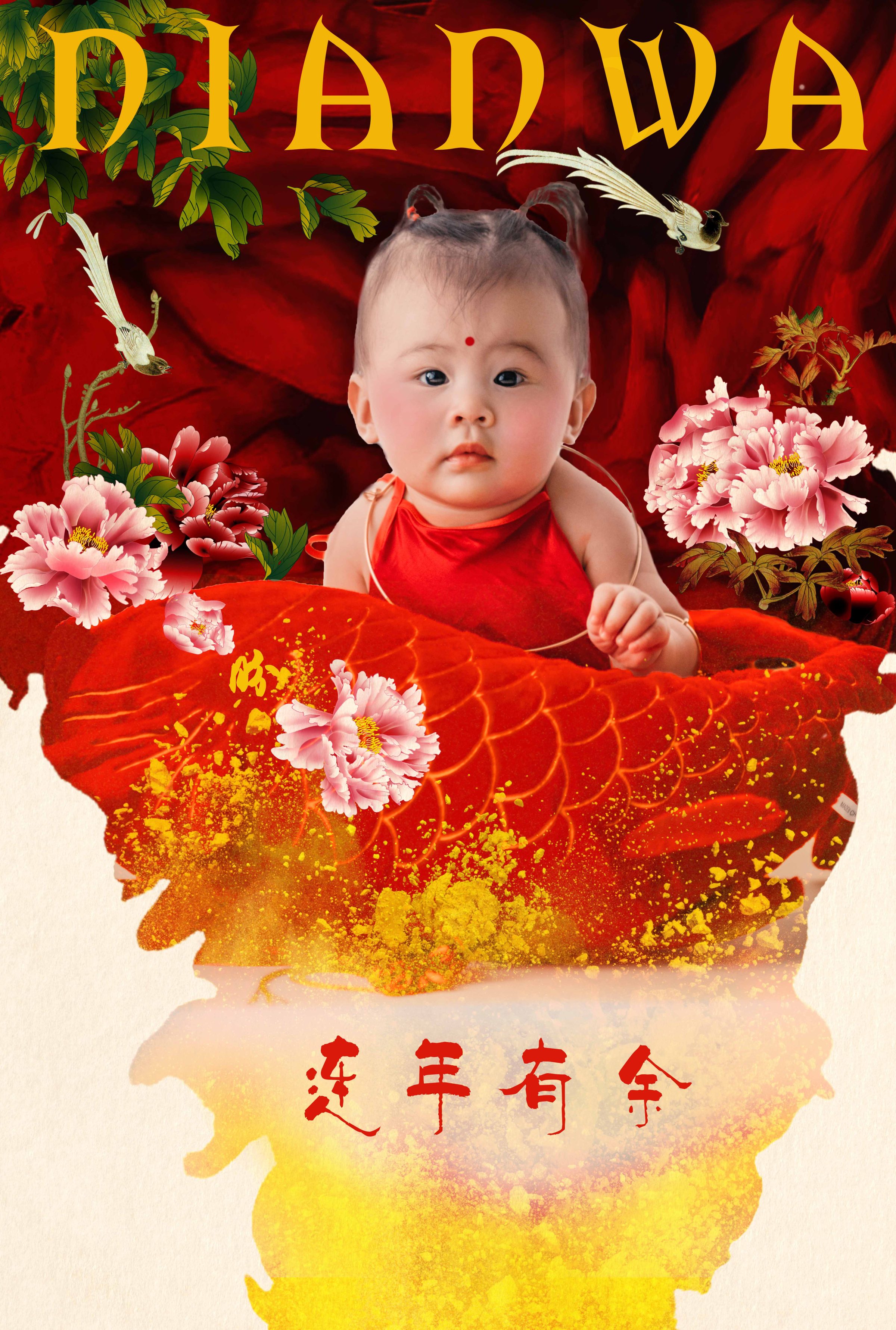
One of the most symbolic children’s apparel would be the belly wrap–earliest finding dated to about Tang dynasty in the 7th to 10th century. Although probably not necessarily in the current form as we recognise it to be today, the practice of covering the front area and exposing the back definitely went way back.
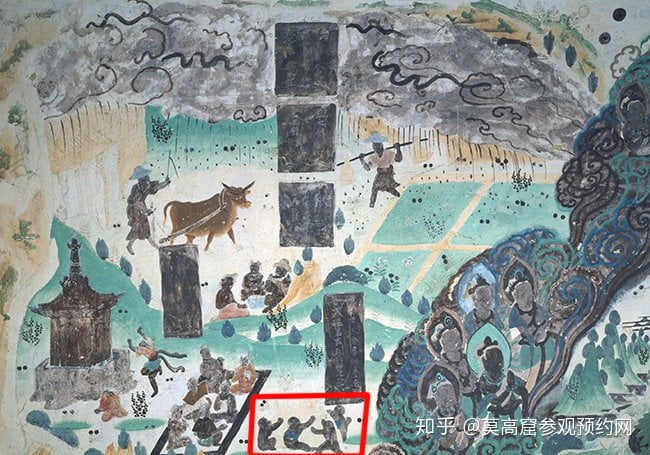
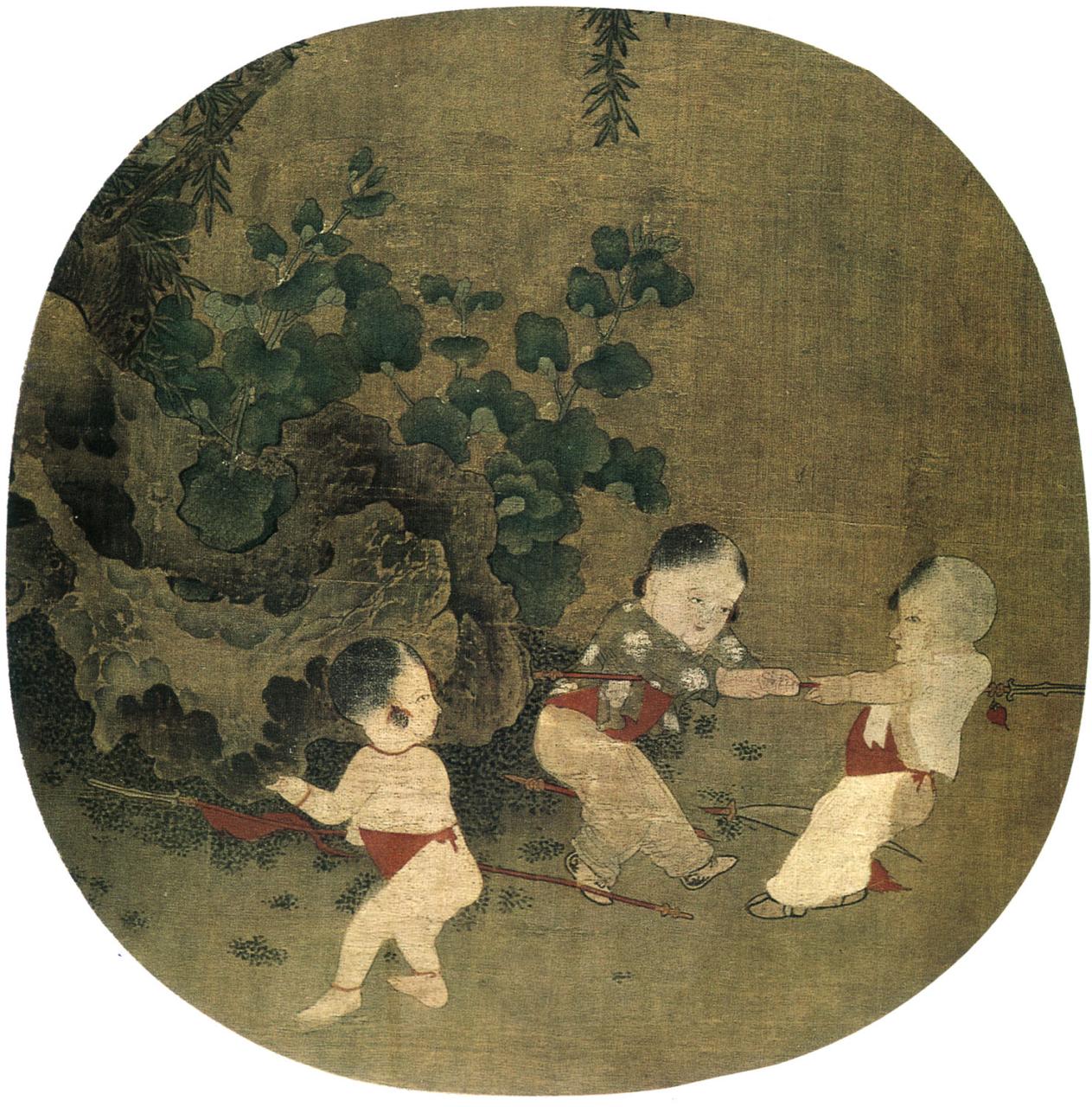
It was believed that when you cover the belly area of the child, you are protecting his overall wellbeing and health as the stomach was seen as the master of all 5 major organs, and that it prefers a warmer environment. Basically most of the common illnesses related to kids would/could be attributed to having cold air going through the stomach.

If you noticed the shape of the belly wrap, you would notice that its base is somewhat rounded, instead of the corner of a sharp lozenge shape, and the other 2 corners at the two sides would be sharp edged. Apparently it was to echo the Chinese believe that the sky is round and the earth is flat–the harmony between heaven and earth and that the human is connected with such natural order even for a child. In the more elaborate forms, the belly wrap would be embroidered with all kinds of auspicious motifs such as the “5 vernomous creatures” (snake, toad, scorpion, lizard and centipete). In a society back in those days where infant deaths were abundant, it was hoped that these vernomous creatures would drive away the evil spirit and real
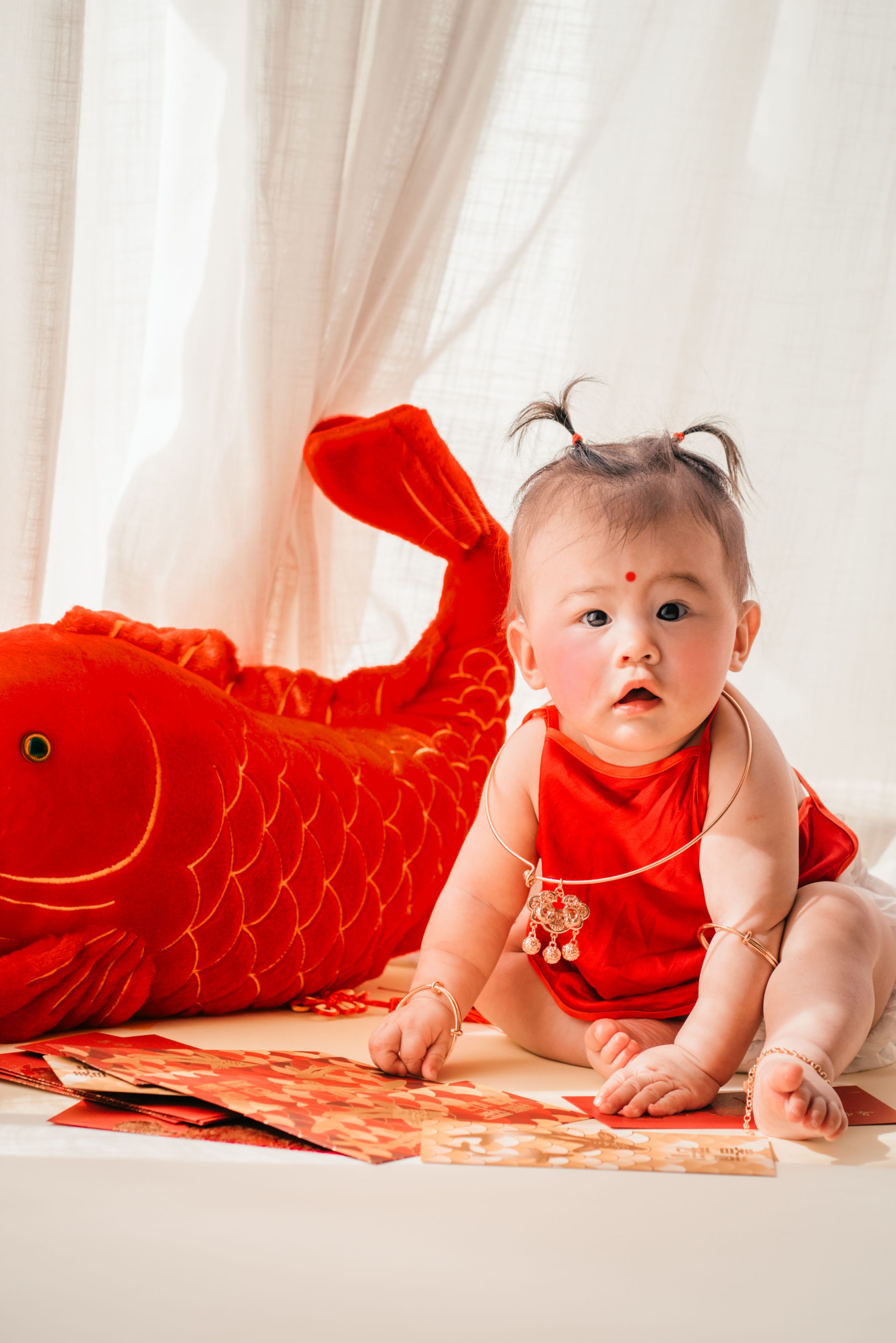
Kids would also always wear what is known as the Longevity Lock necklace, which acts like a goodluck charm. The necklace is in the shape of a Ruyi (Everything goes according to one’s wishes) wish well wishes carved onto them and usually made of gold of silver although there were also those made of jade, silk, fabric and other materials. The origin of it is was due to the fact that in the ancient past especially in the Ming dynasty when the government was trying to push for the use of paper currencies, gold and silver were not permitted to be used for transactions, so the rich would then use whatever gold or silver they had to make into accessories instead. Yes, the TV shows probably had us all fooled into thinking the rich could just take out one of the gold ingots in exchange for things, but the reality is gold was only reserved for high officials and royalties, and in the Tang dynasty it was usually gifted by the emperor so you couldn’t just simply give away or use something the emperor bestowed upon you, could you?
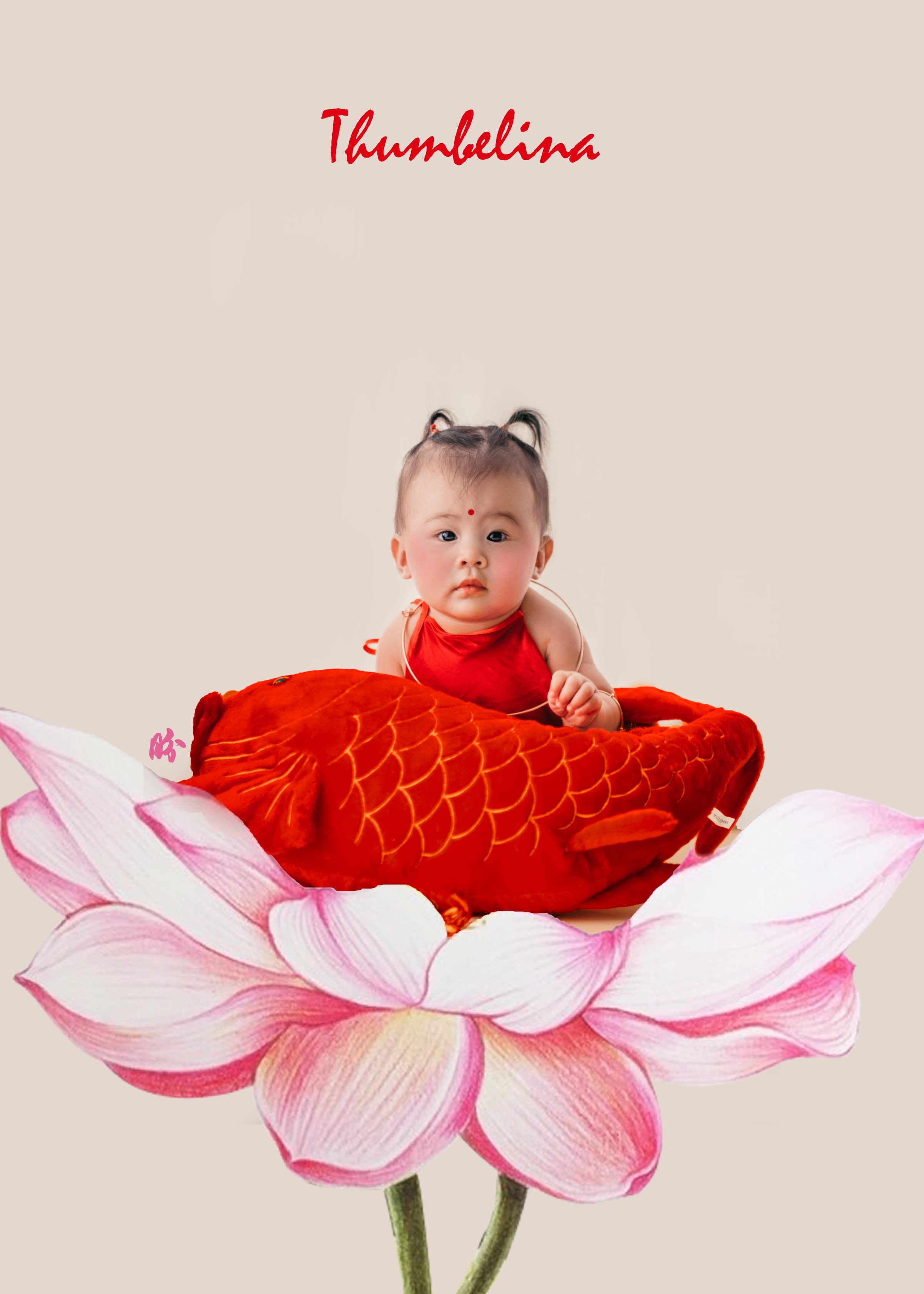
The image of young child in red belly wrap with a longevity neck ring on a lotus might remind you of Thumbelina (Chinese version), but these element make up an iconic auspicious image in Chinese tradition, occasionally with an added frog at the bottom of the painting. It was believed that such image would bless you with many sons as lotus is the homophone of “continuous” and its many seeds symbolises fertility–童锁带莲,贵子连连(Child with longevity lock and a lotus, brings you son one after another).
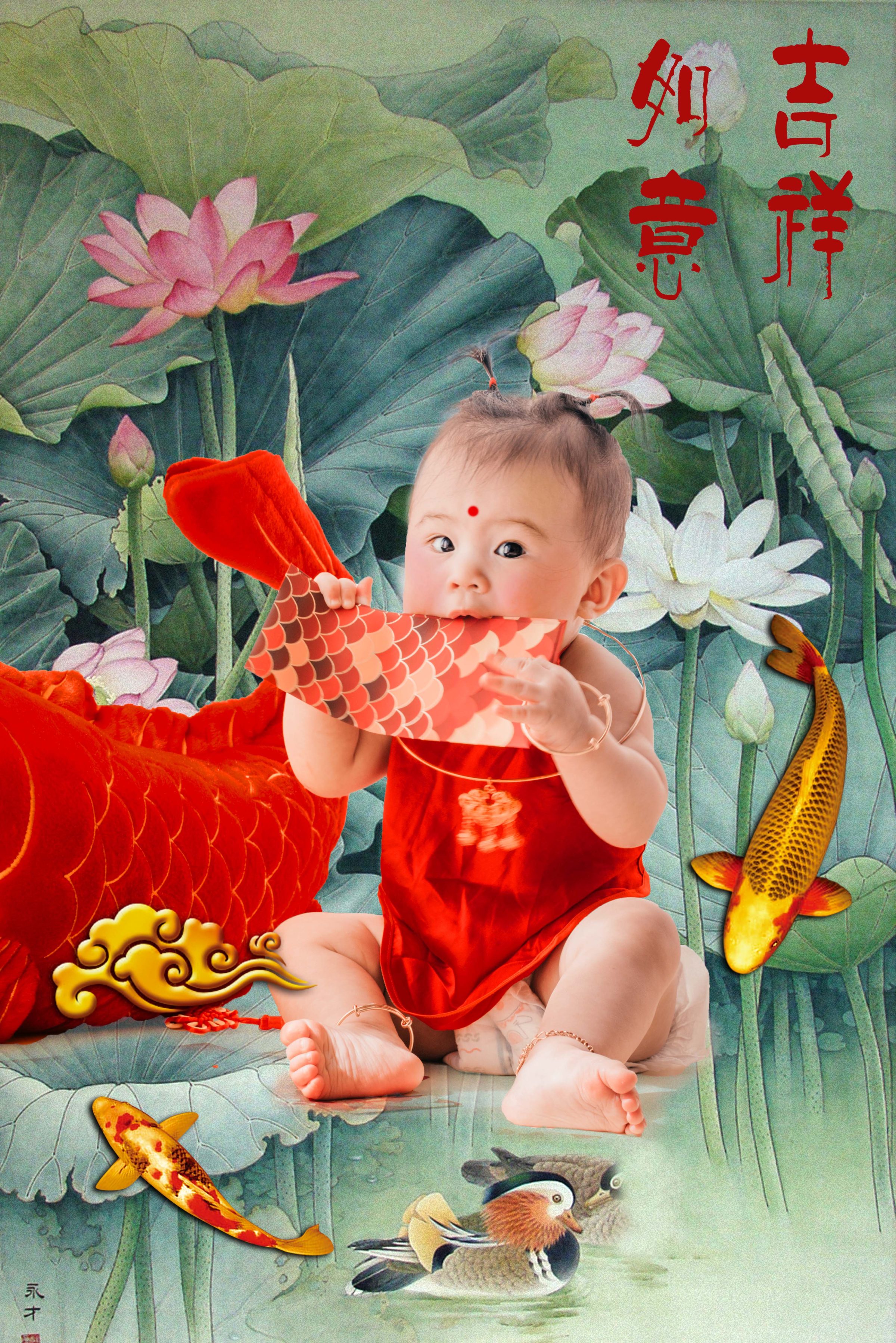
You would probably think of Nezha, or Hong Hai’er (Red Boy of the Bull Demon King from the Journey to the West), now that we put a lotus, the neck rings and the red belly wrap together.
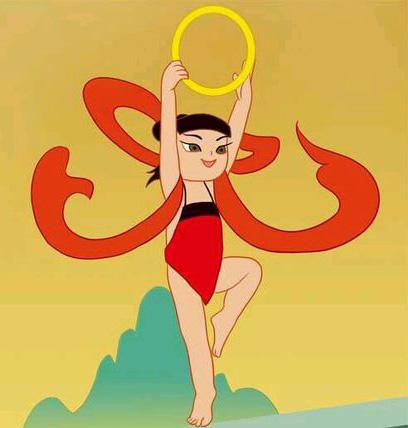
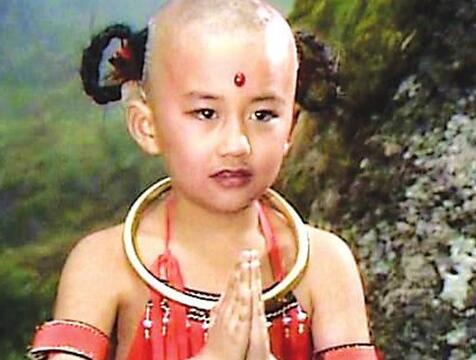
The original idea of Nezha was actually a Zoroastrian god from the Persian culture–Nowzar, a great warrior and hero. Zoroastrian was very openly accepted and practised by Persian migrants to the Tang empire in the 8th to 10th century. Many deities in Chinese Buddhist and Taoist traditions as we know today are absorbed from different cultures outside of China and Nezha is one of them. Buddhism absorbed Nowzar and then Chinese Taoism followed suit in adopting its story, and somewhere down the road we have a fusion of all these different cultural beliefs and many versions of the story.
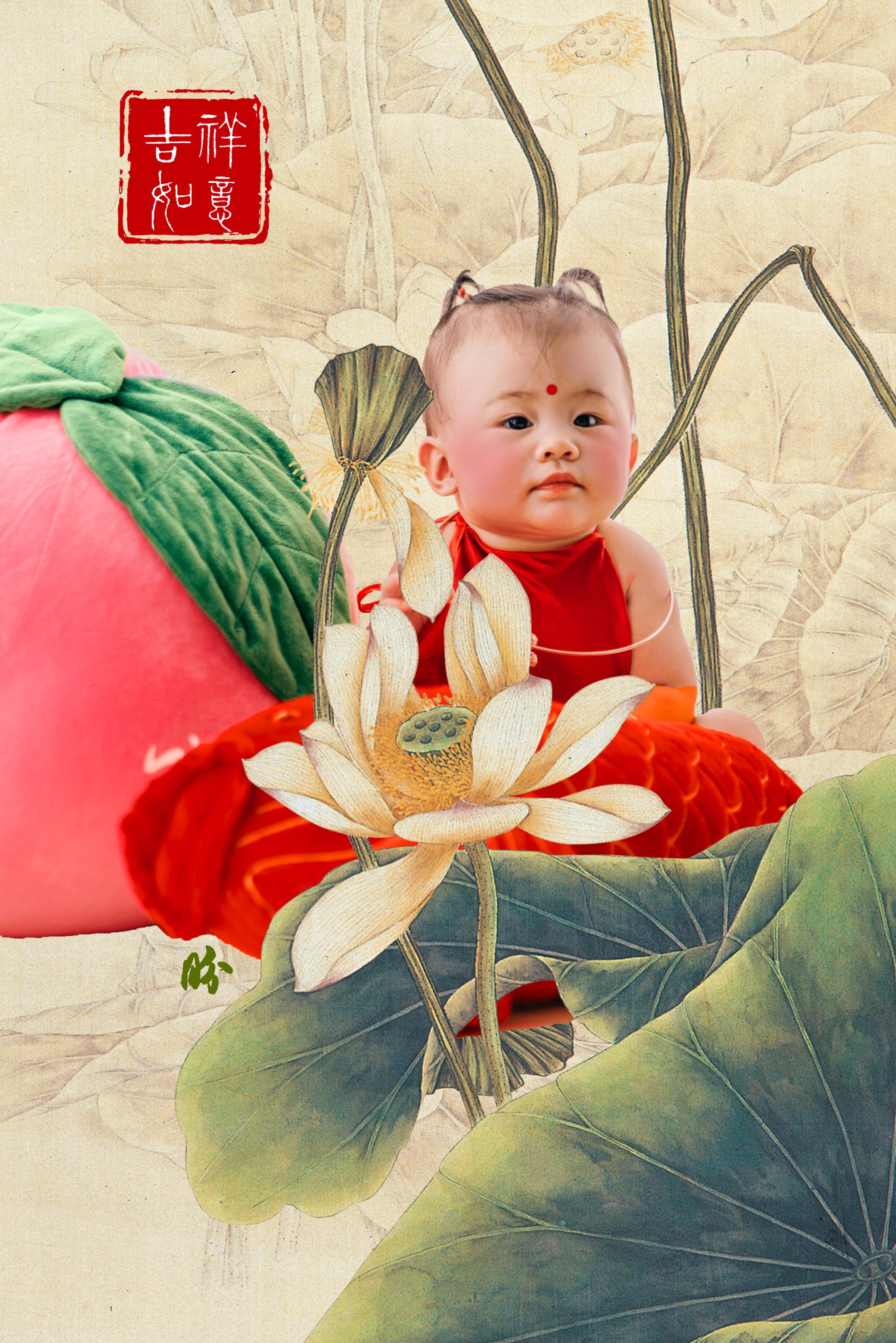
The Chinese story of Nezha was that of a righteous and impulsive child born into a noble family in the Tang dynasty with superb combat abilities (despite his young age). He got into a fight with one of the dragon kings (there were different dragon kings governing different parts of the seas), and killed him. In order not to implicate his parents for what he did, Nezha stood before the gods and shaved his own flesh and bones, and severed his own limbs as a form of self punishment. Buddha then reassembled and restored his broken body using the lotus roots for his limbs, and revived him.
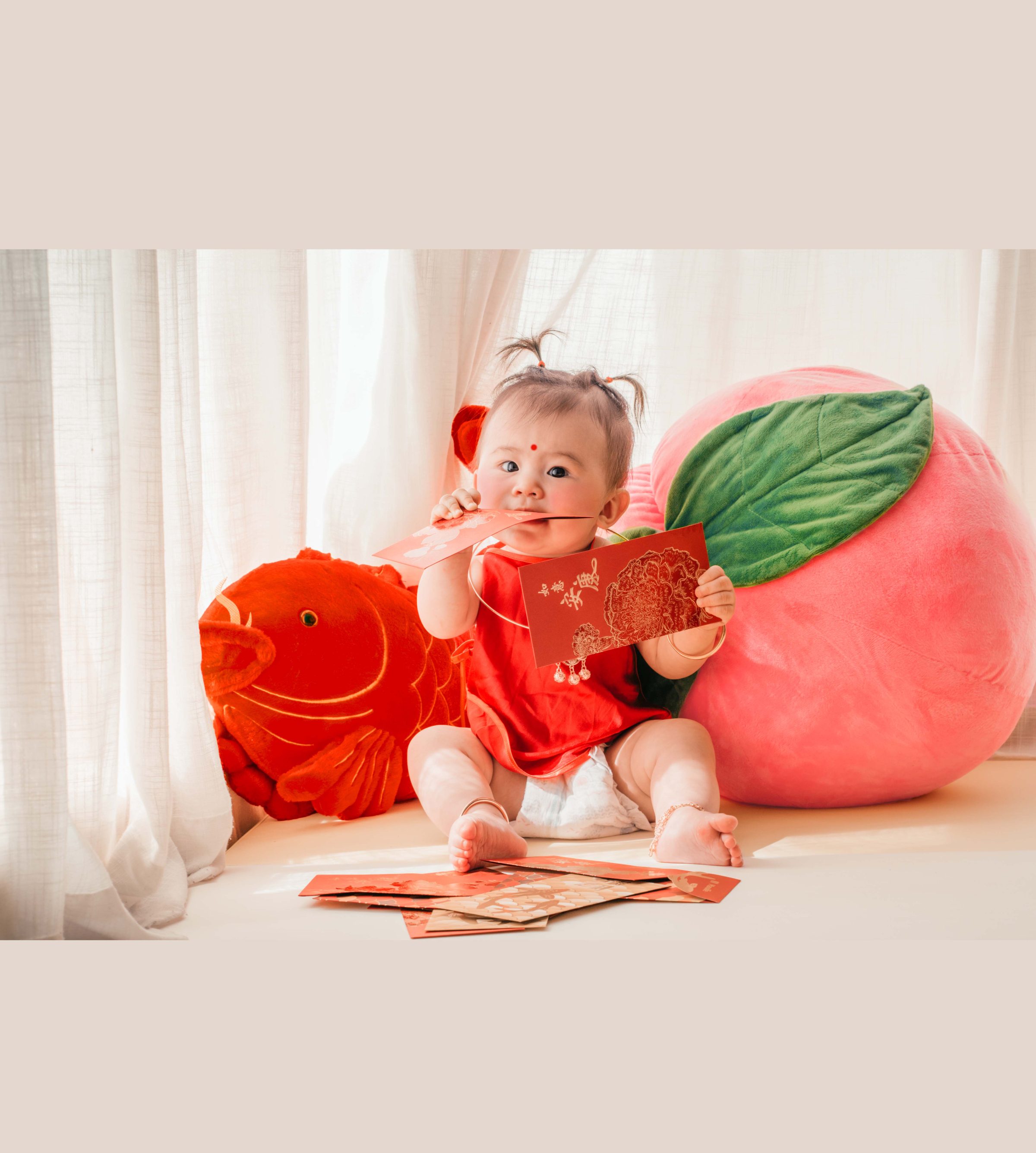
The image of the Red Boy is somewhat similar, but often depicted with 2 horns or partially shaved head with islands of long hair tied up/braided up. The greatest difference is, Nezha was seen as a hero, a symbol of filial piety and redemption while the red child was seen as a rebellious demon child. I kind of suspect that this is the Chinese’s way of judging a child by their parents–one is of noble blood, another is of demon blood. The Red Boy is simply another fierce and powerful child, who inherited superb combat skills and power from the combination of his parents–the Iron Fan Princess, and Bull Demon King:
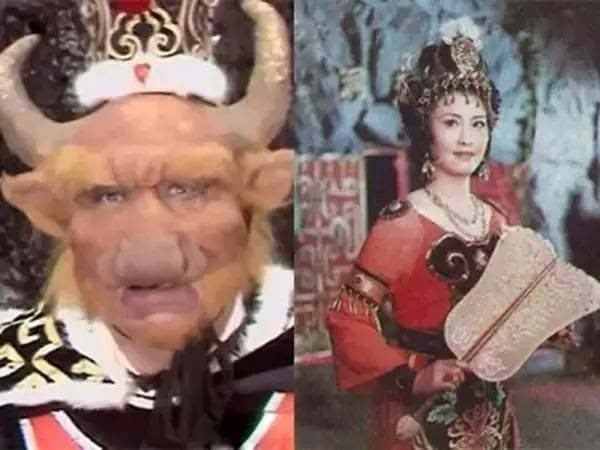
It was unacceptable for grown adults back then to cut their hair due to a Confucian classic on filial piety stating that your hair were gifts from your parents, and you should take good care of it and not harm/damage/destroy it in any way as acts of filial piety. One of the most insulting punishment in those days was to shave their head off, so you can imagine how serious the ancient Chinese took this matter.
But children, they are exceptions to this rule. In fact, they are supposed to have their head shaved within their first month of birth because of the belief that the delivery process has tainted their body with dirty blood and its associated bad luck, so you have to shave them off in order to not offend the deities when the child get out of the dedicated confinement room. And for girls whose dark straight long locks were symbols of beauty, it was believed that shaving the head meant that the baby hair will grow to darker, thicker strands.
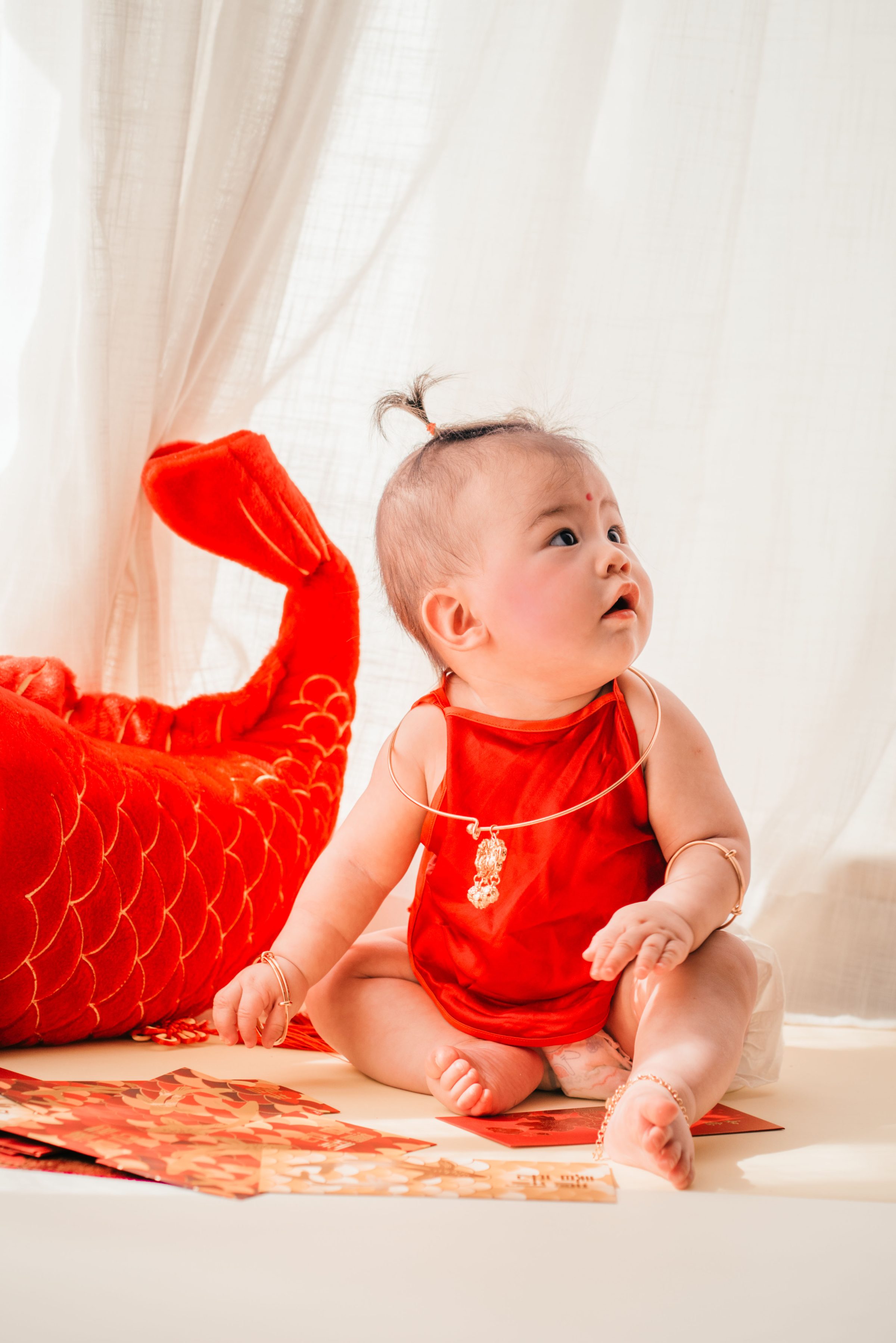
To strike a middle ground (very Chinese, this dedication to maintaining the middle ground), their heads were not to be shaved completely. In fact, they should always have a areas of hair that’s left unshaved. And you can imagine the many different styles of such–the ancients surely exercised lots of creativity in styling their children’s hair. In a painting from the Southern Song dynasty in the 12th century (傀儡婴戏图 Children playing with puppets, below), you could see that each of the 4 children had a different hairstyle. Those who tied them up, used a red string for fastening.

There are a lot of other symbolism related to the Nian Hua (Chinese woodblock print), children’s apparels (embroideries, shapes, colours) and children’s accessories (the longevity lock’s motif and word engravings, shapes, material) which I won’t go into detail yet (too heavy for the holiday period). I hope that this entry kind of just open up certain understanding of how important dressing up was to the ancient people, and the rich symbolism and meanings that they embed into even the most mundane of things!
Here’s wishing everyone a Happy Chinese New Year of the Ox from #hanfugirl and #hanfubaby! May your year be filled with Auspiciousness like how I’m filling the remaining of this entry with auspicious imageries!
Disclaimer: No child was harmed in the process of the shoot. No make up was applied on her either! It’s all post production 😉
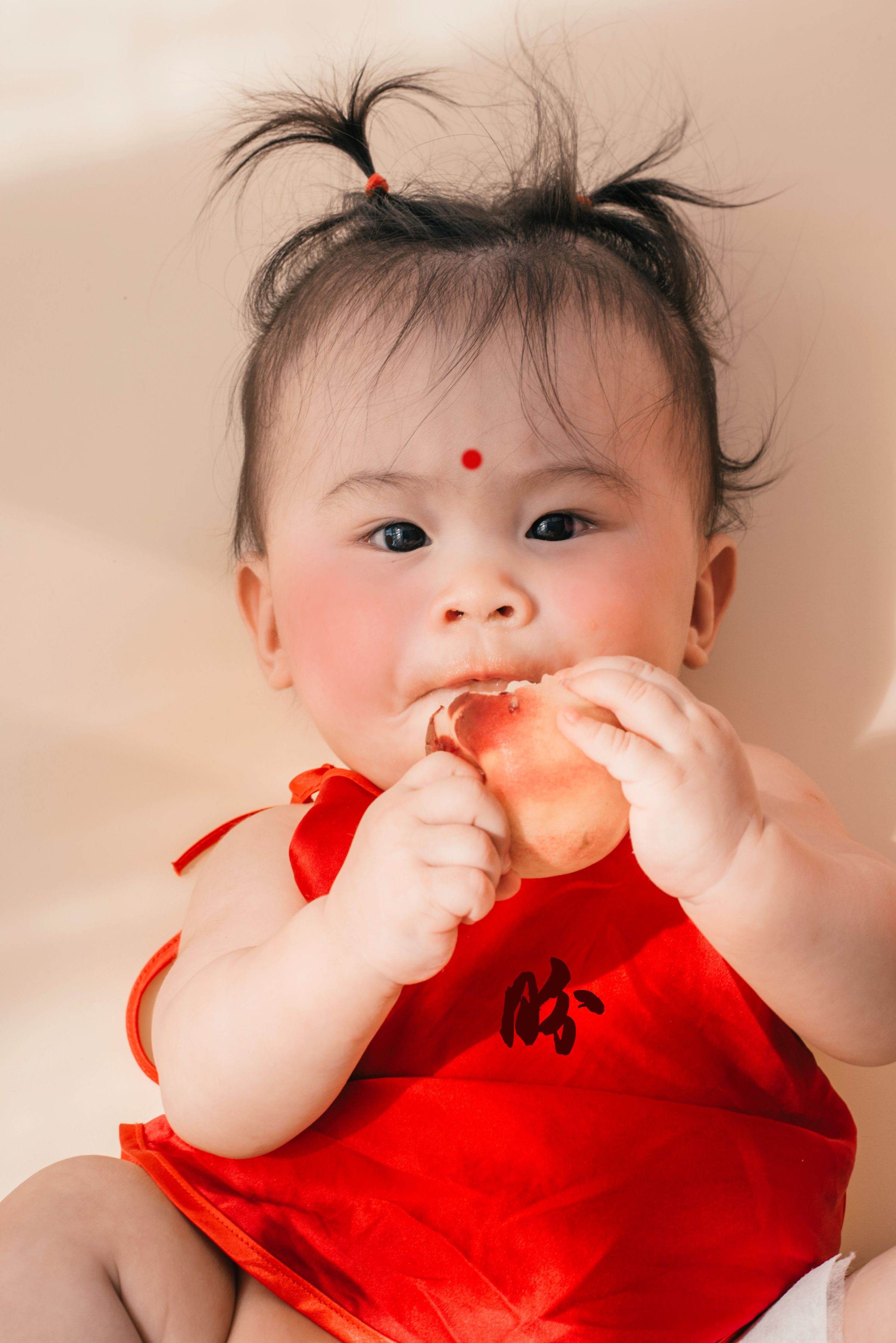

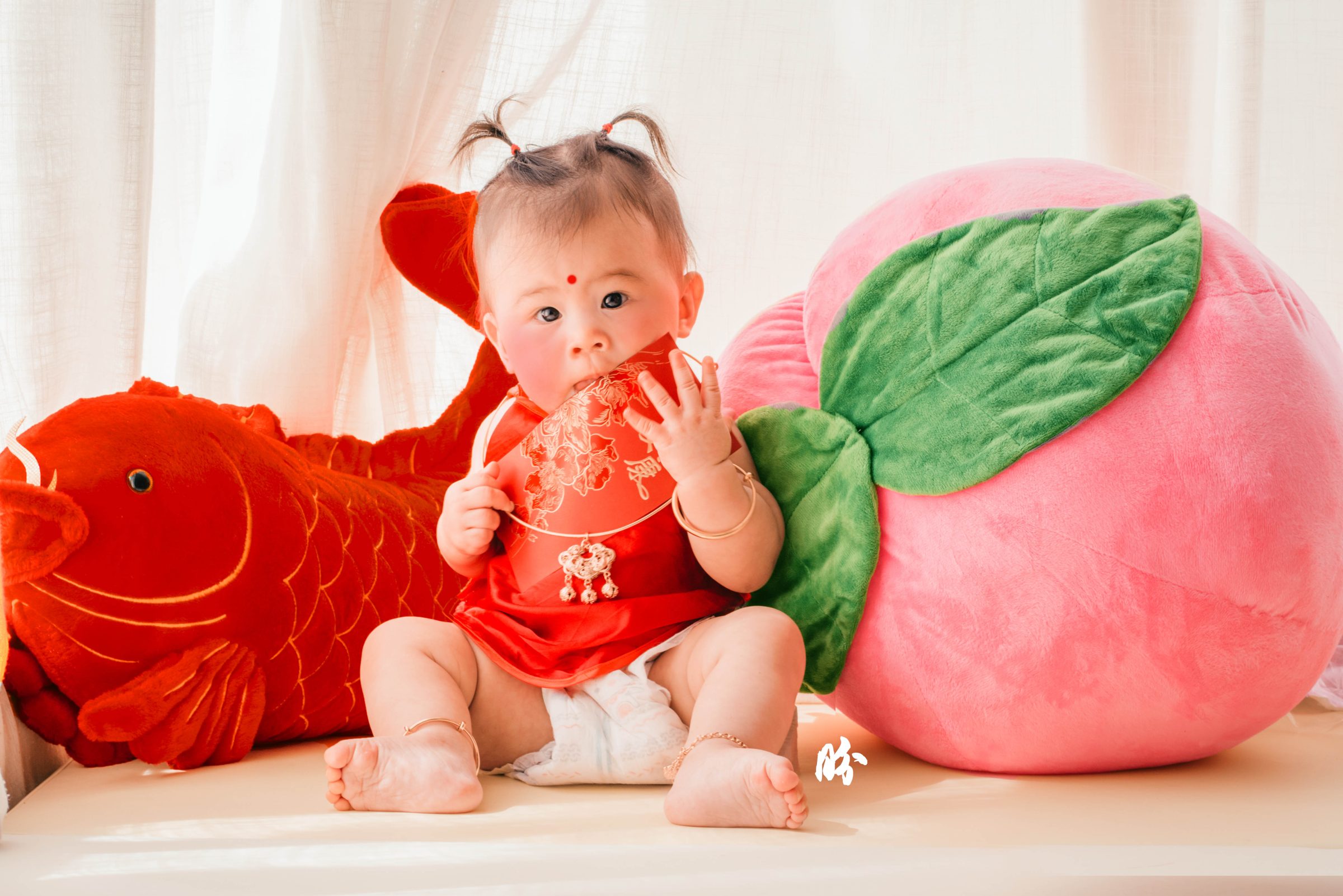

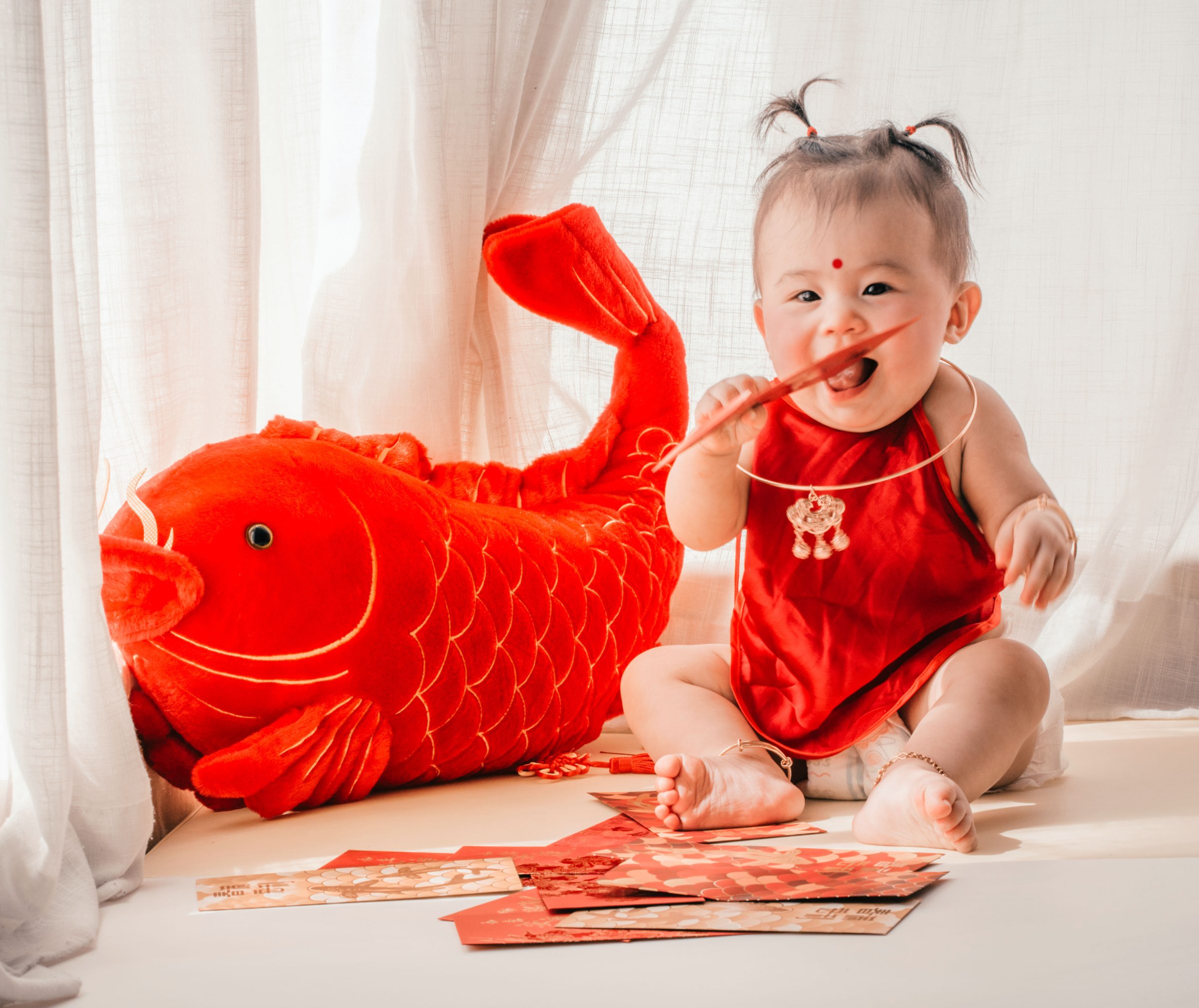
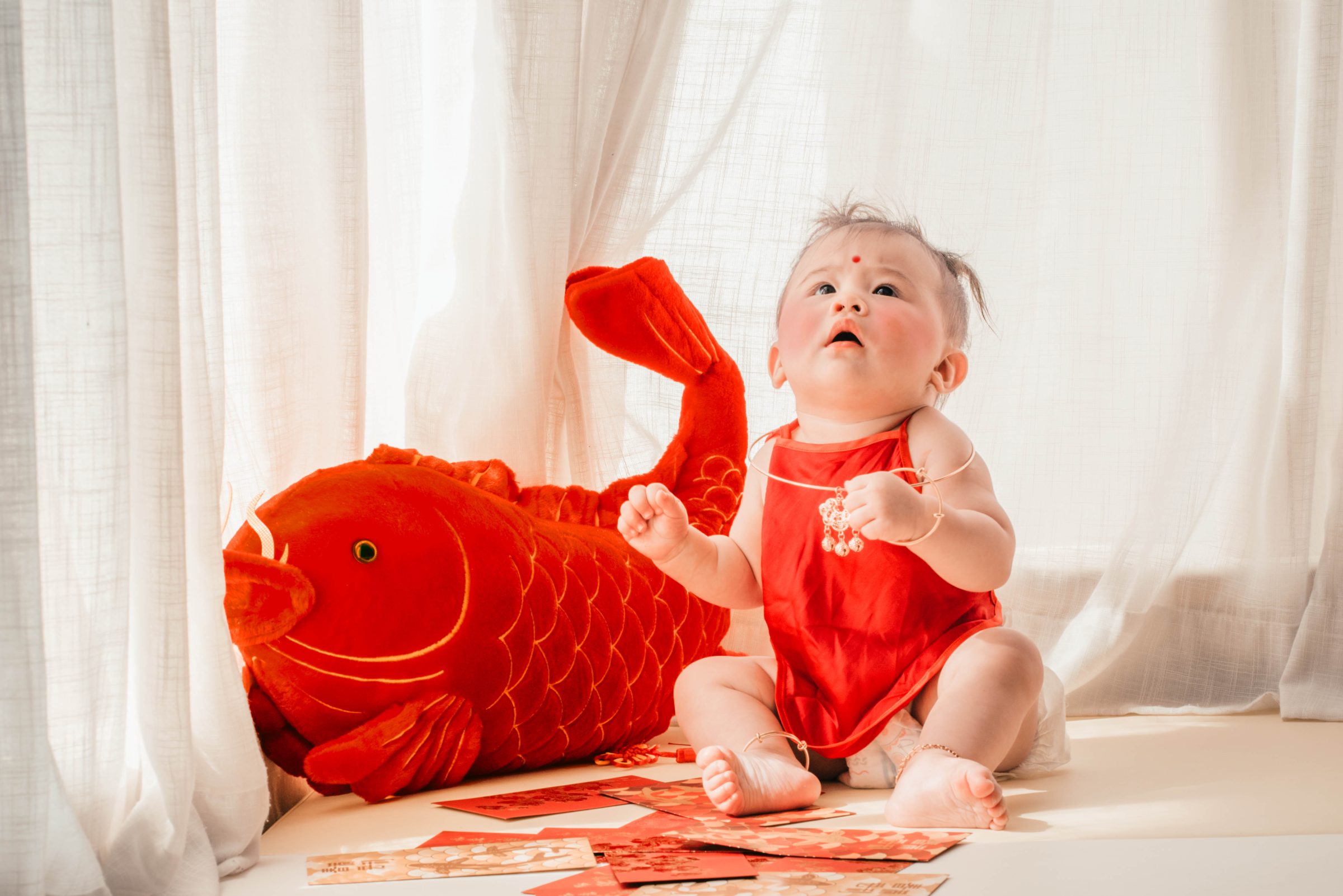



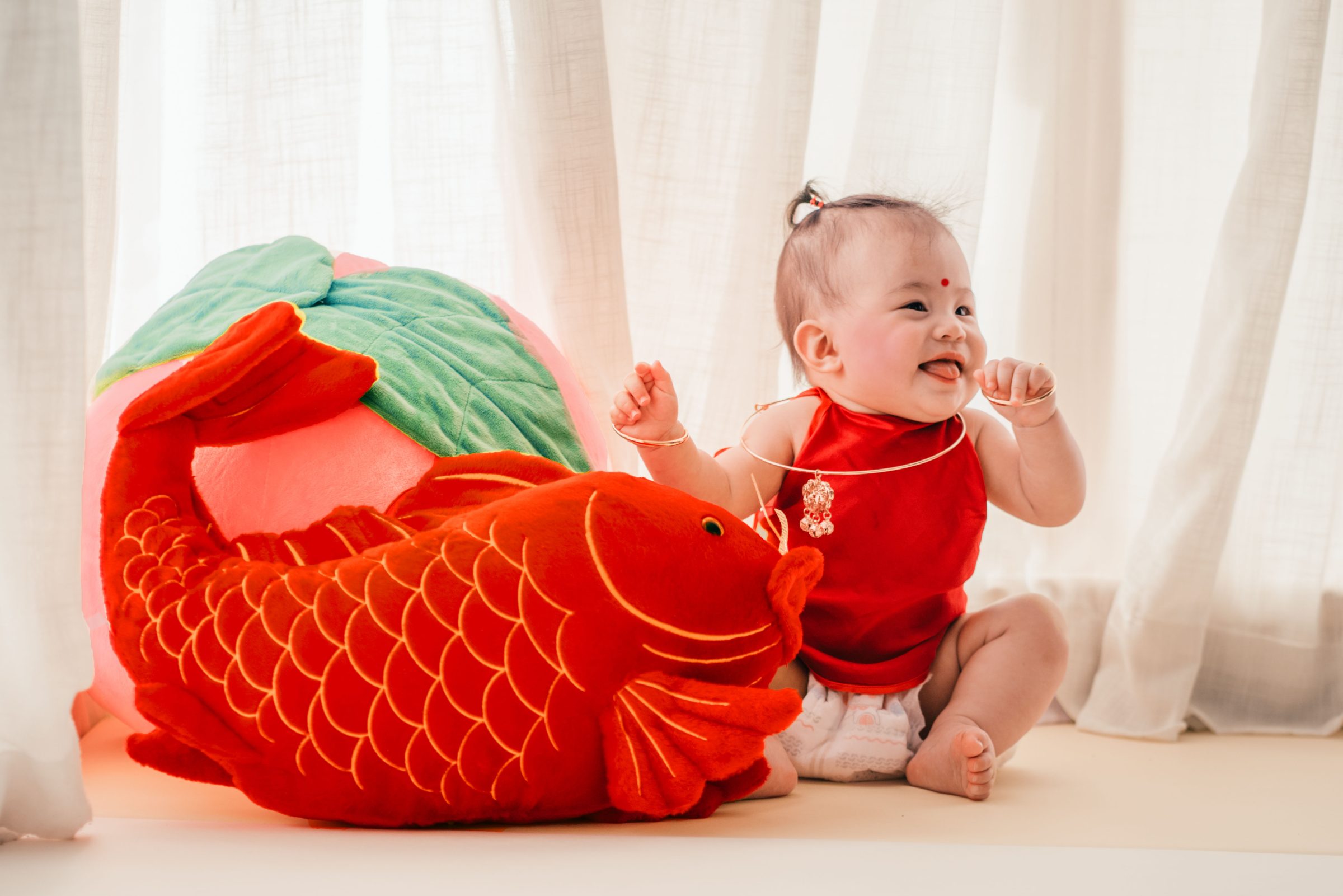
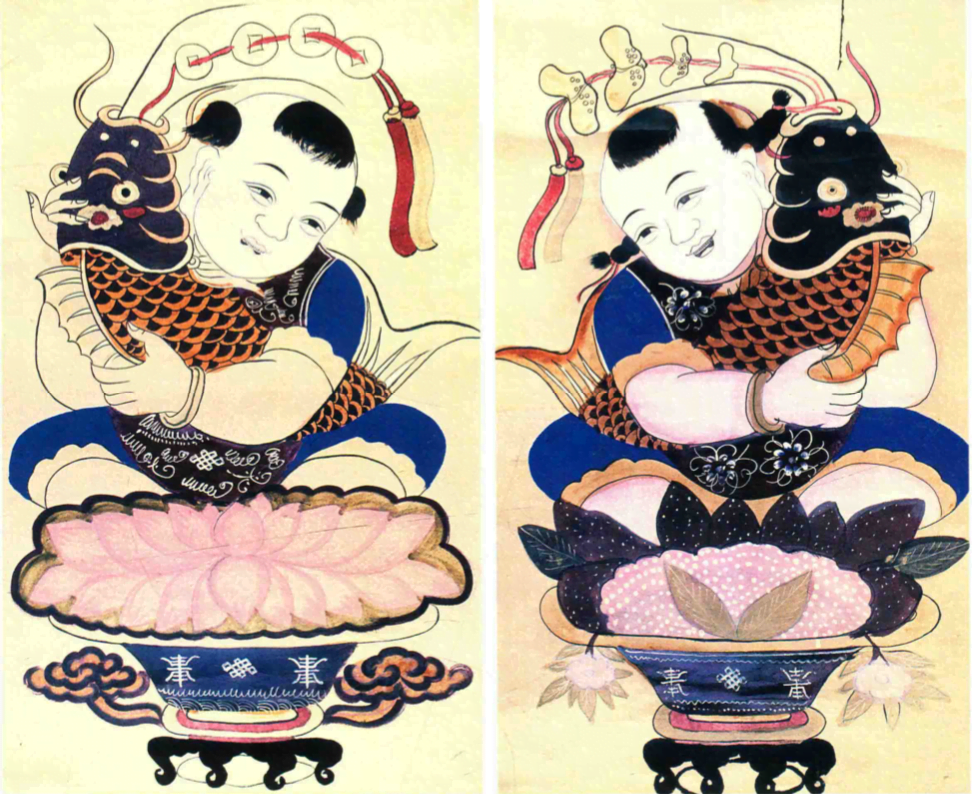
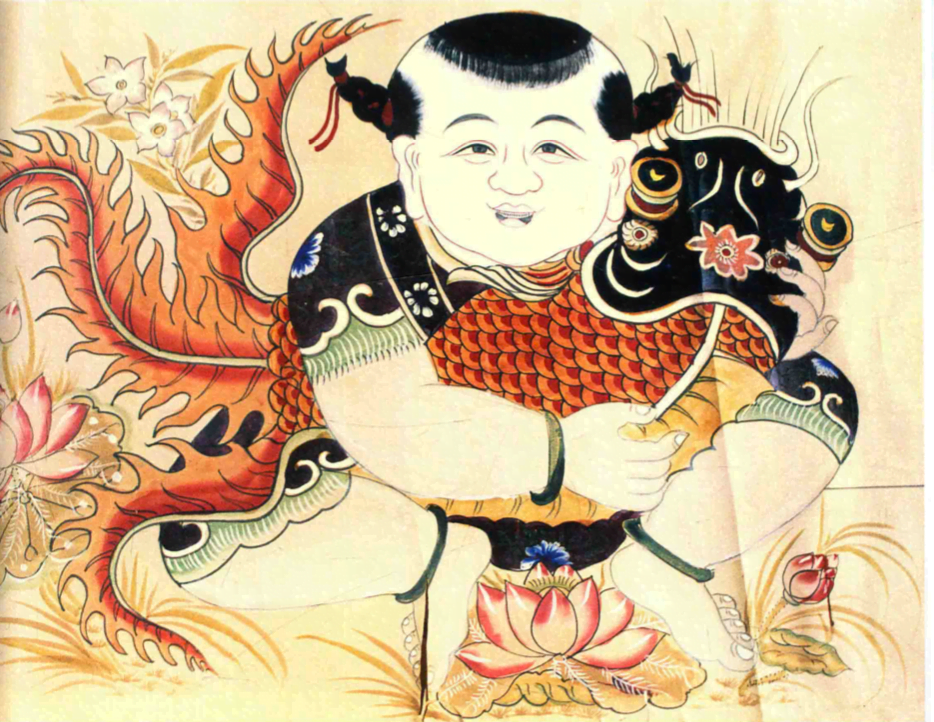
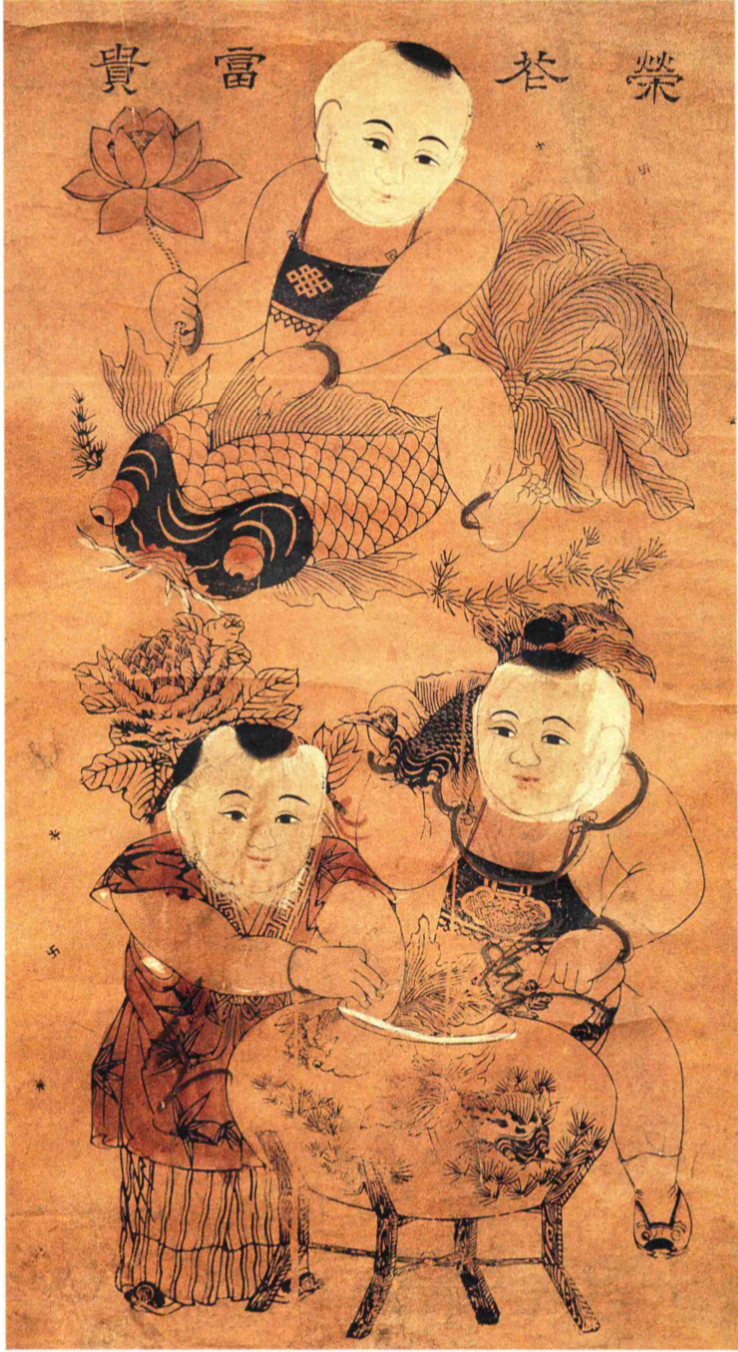



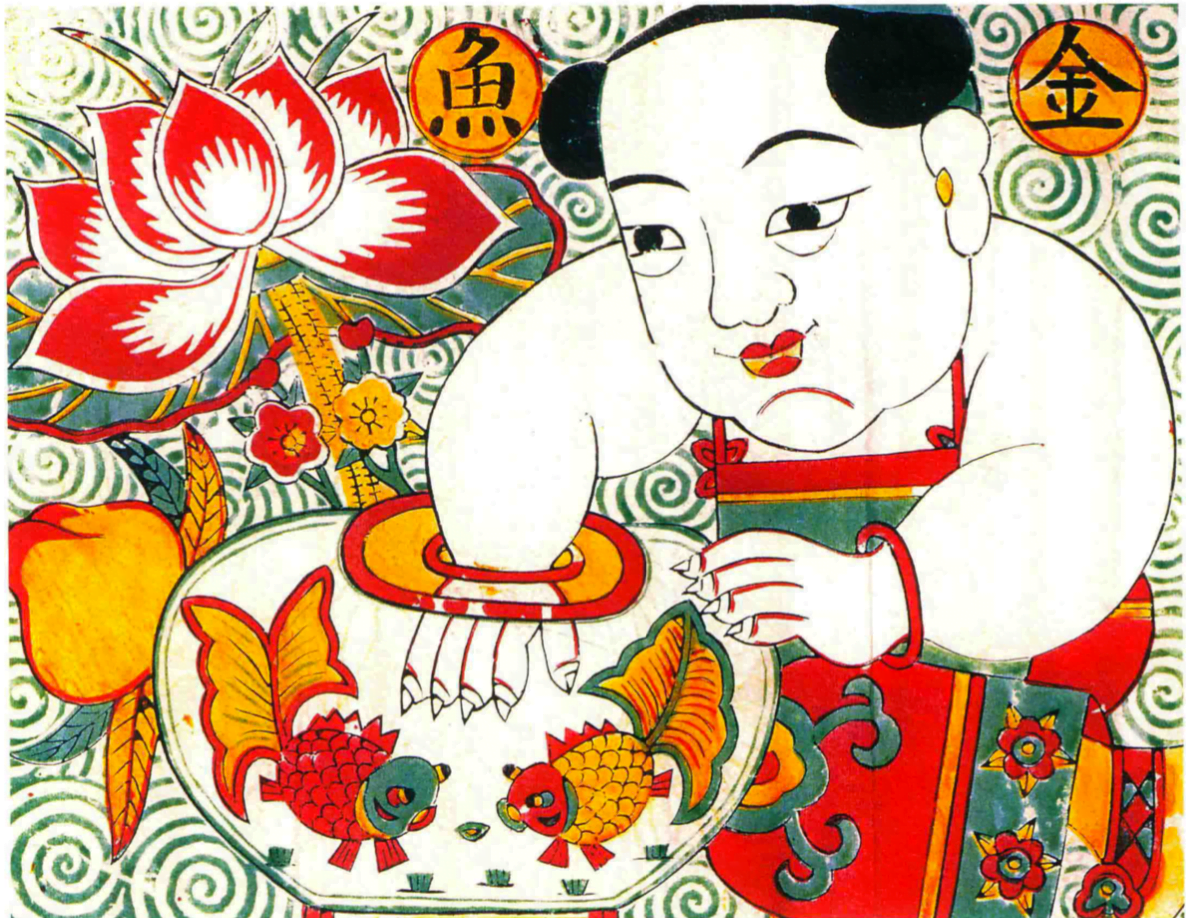

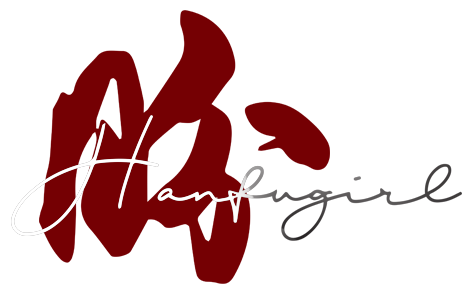
Leave a Reply